There are so many reasons to add live plants to your aquarium. With vibrant leaves in shades of green and red, live plants are attractive and add lots of texture and interest when planted in your aquarium. Aquatic plants also help to filter nutrients out of your aquarium water, helping to keep your tank clean and healthy for fish and other tank inhabitants.
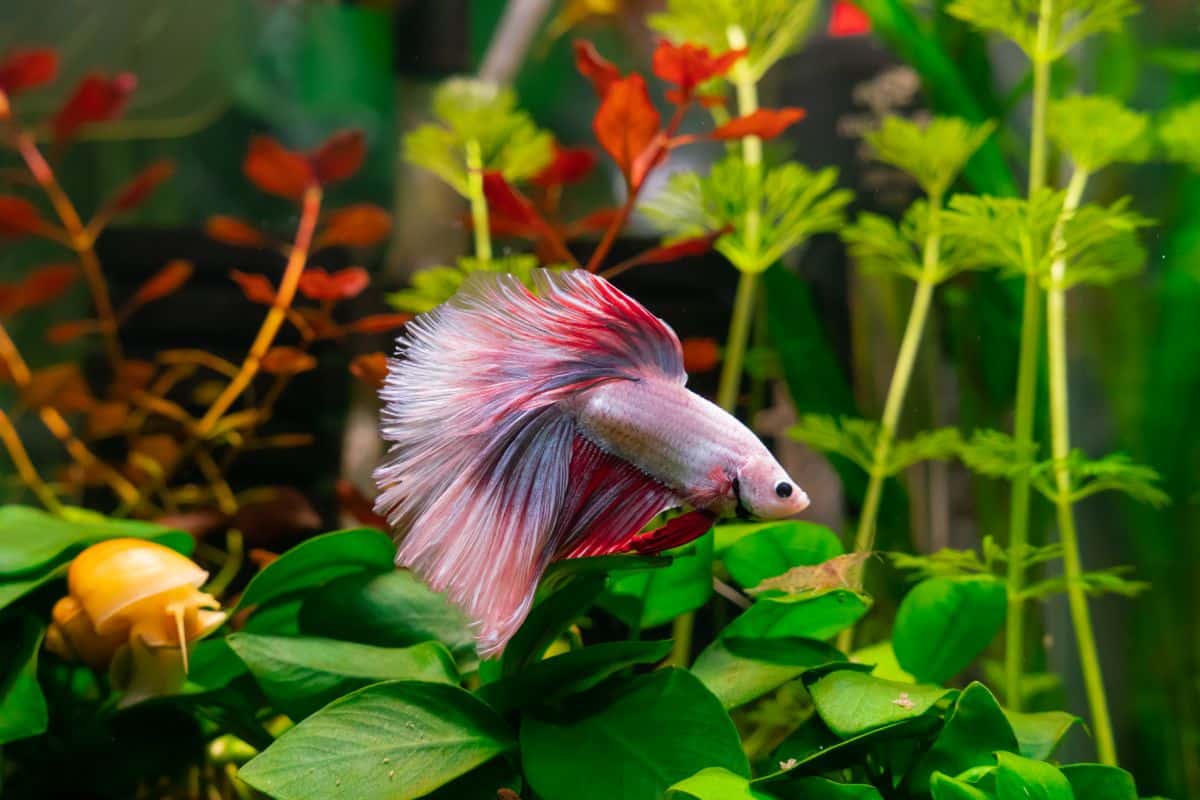
If you’re new to keeping a planted aquarium, the sheer number of aquatic plants on the market today can feel a bit intimidating. What’s more, some live plants can be tricky to keep and have very specific water parameters, and lighting needs to keep them growing healthy and strong.
To help you out, we’ve compiled some of the easiest aquatic plants for beginners. These stunning specimens will work in most freshwater aquariums and should be easy to keep as long as you follow a few basic growing tips.
Jump to:
- 19 best freshwater aquarium plants for beginners
- 1. Java Moss (Taxiphyllum Barbieri)
- 2. Marimo Moss Balls (Aegagropila linnaei)
- 3. Amazon Sword (Echinodorus grisebachii)
- 4. Water Wisteria (Hygrophila difformis)
- 5. Dwarf Aquarium Lily (Nymphaea stellata)
- 6. Anubias (Anubias barteri)
- 7. Dwarf Baby Tears (Micranthemum callitrichoides)
- 8. Dwarf Hairgrass (Eleocharis parvula)
- 9. Brazilian Micro Swords (Lilaeopsis brasiliensis)
- 10. African Water Fern (Bolbitis heudelotii)
- 11. Java Fern (Microsorum pteropus)
- 12. Water Trumpet (Cryptocoryne Wendtii)
- 13. Aponogeton Crispus
- 14. Pogostemon Helferi
- 15. Sunset Hygro (Hydrophila polysperma)
- 16. Rotala Rotundifolia
- 17. Blue water Hyssop (Bacopa caroliniana)
- 18. Moneywort (Bacopa monnieri)
- 19. Pepperwort (Marsilea spp.)
- Frequently asked questions
- Summary
19 best freshwater aquarium plants for beginners
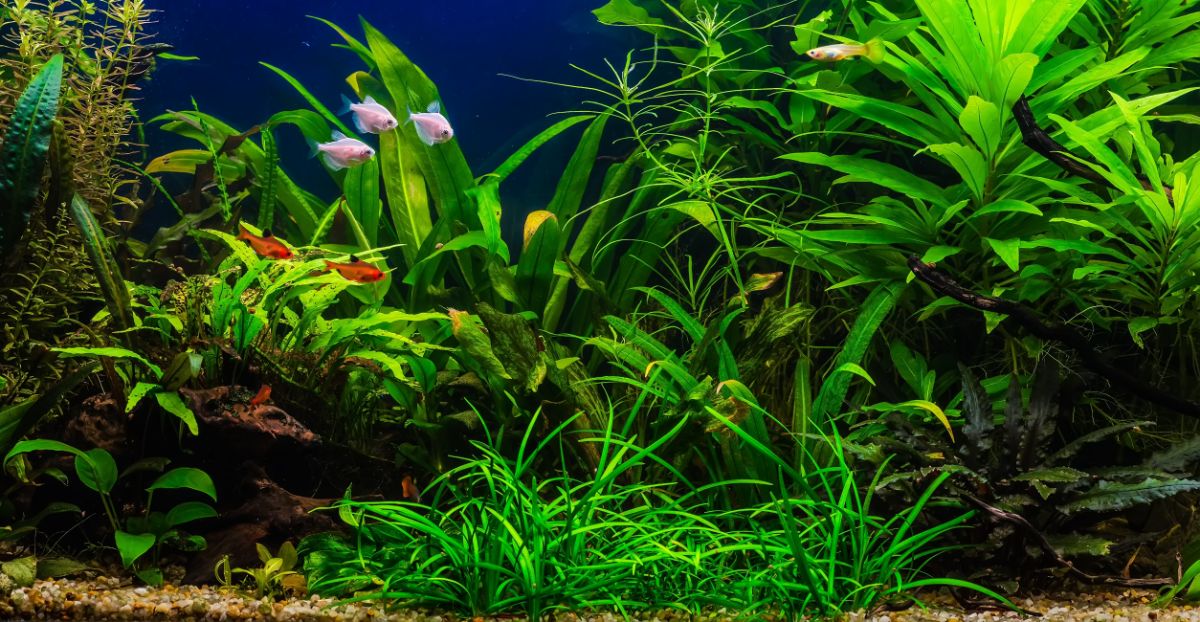
In the list below, we’ve gathered together some of our top favorite aquatic plants for beginners. These plants are all attractive specimens, but they also offer loads of benefits to your tank, including improved water quality and healthier fish.
To make it easier to decide which plants will work for you, we’ve also noted which plants are less likely to be eaten by goldfish and other aquatic animals to keep your fish tank as low maintenance as possible.
1. Java Moss (Taxiphyllum Barbieri)
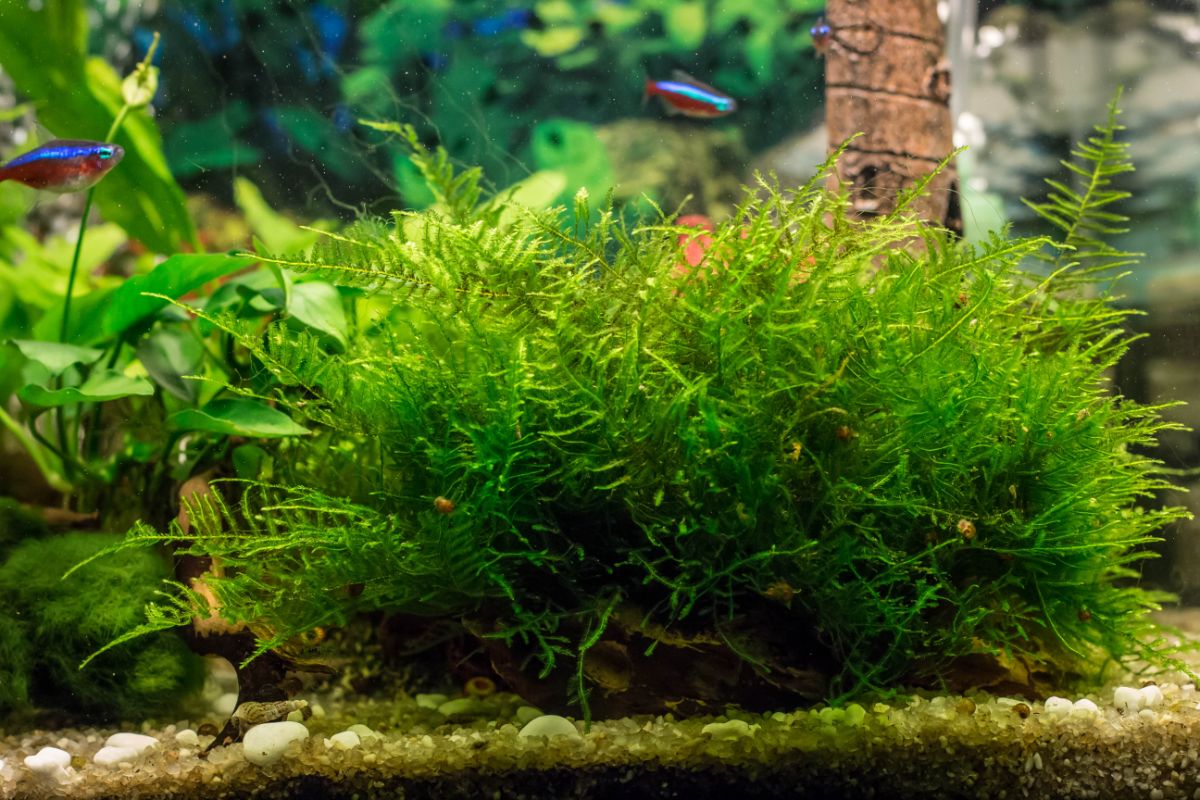
| Plant name: | Java moss |
| Light needs: | Low |
| Nutrient needs: | Low |
| Height: | 2 to 4” |
| Fish resistant? | No |
Named after the Indonesian island of Java, Java moss is an easy-to-care-for aquarium plant that’s perfect for beginners. Delicate, feathery leaves are bright green and compact growing, making this an excellent foreground plant for your tank. Java moss can also be attached to driftwood or rocks to give it a more vertical appearance.
Adaptable to a wide range of aquarium parameters, java moss grows best in bright light and will grow and spread rapidly into a carpet-like consistency that is easy to prune. This plant also doesn’t need extra CO2 or fertilizers. And, if you needed more reasons to try out java moss, it’s an ideal habitat for fish and shrimp fry.
2. Marimo Moss Balls (Aegagropila linnaei)
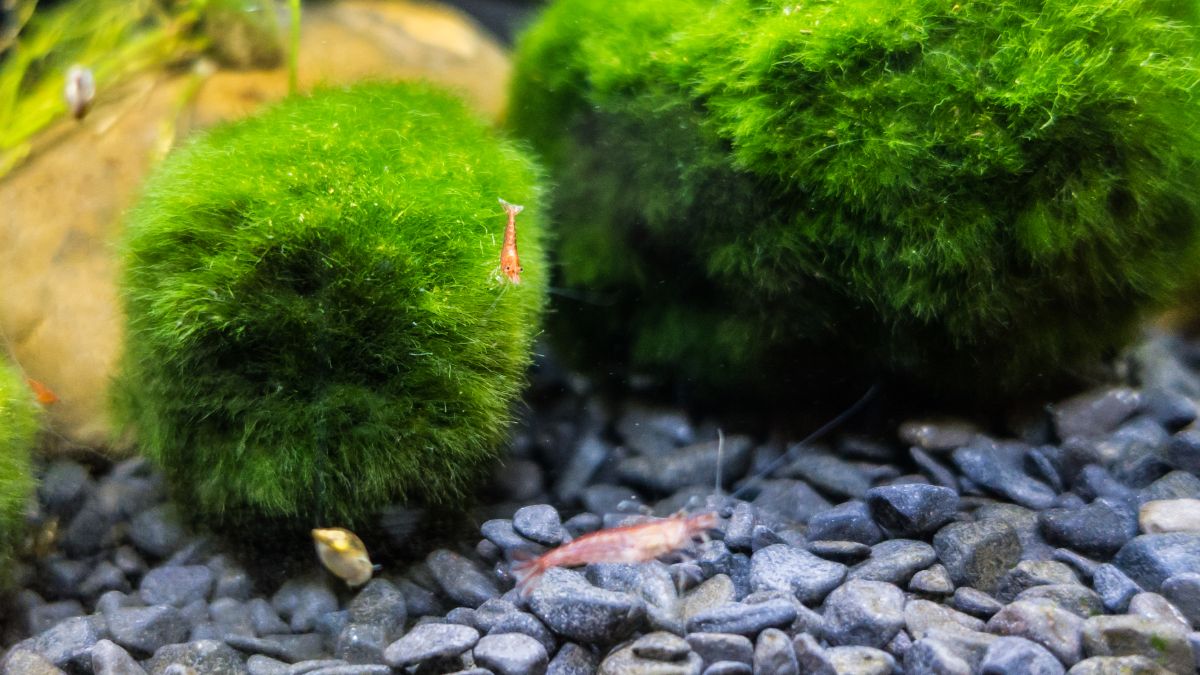
| Plant name: | Marimo moss balls |
| Light needs: | Low |
| Nutrient needs: | Low |
| Height: | 2 to 5” |
| Fish resistant? | No |
Marimo moss balls are one of the most popular aquarium plants, prized for their cute and whimsical, orb-like shape. Despite their name, Marimo is actually not a moss at all but is a type of algae that naturally grows in a spherical form. These plants do require a bit of water movement, however, as they may begin to flatten out over time in tanks with weak currents or poor lighting.
Known to be virtually indestructible, Marimo balls can handle relatively low light, and they prefer colder tank temperatures. Often kept as ornamentals in betta tanks, Marimo balls lend fun movement to your aquarium as they roll around. Just be aware that there are some fake Marimo balls on the market that are crafted out of Styrofoam and artificial moss.
3. Amazon Sword (Echinodorus grisebachii)

| Plant name: | Amazon sword |
| Light needs: | High to moderate |
| Nutrient needs: | High to moderate |
| Height: | 18 to 20” |
| Fish resistant? | No |
A very attractive aquarium plant with big, lance-shaped leaves, the Amazon sword is the plant to go for if you’re looking for an aquatic specimen that will make a statement. There are actually several different plants that may be marketed as “Amazon swords,” but that shouldn’t be a problem since they all have the same basic care requirements. True Amazon swords come from the Amazon River basin and are very popular in the aquatic trade.
These rooted plants can grow to about 16” in height and make a lovely backdrop plant, although they also look stunning when positioned at the mid-tank level. Amazon swords will require liquid fertilizer or root tabs to keep them looking their best. They also thrive in bright light.
4. Water Wisteria (Hygrophila difformis)
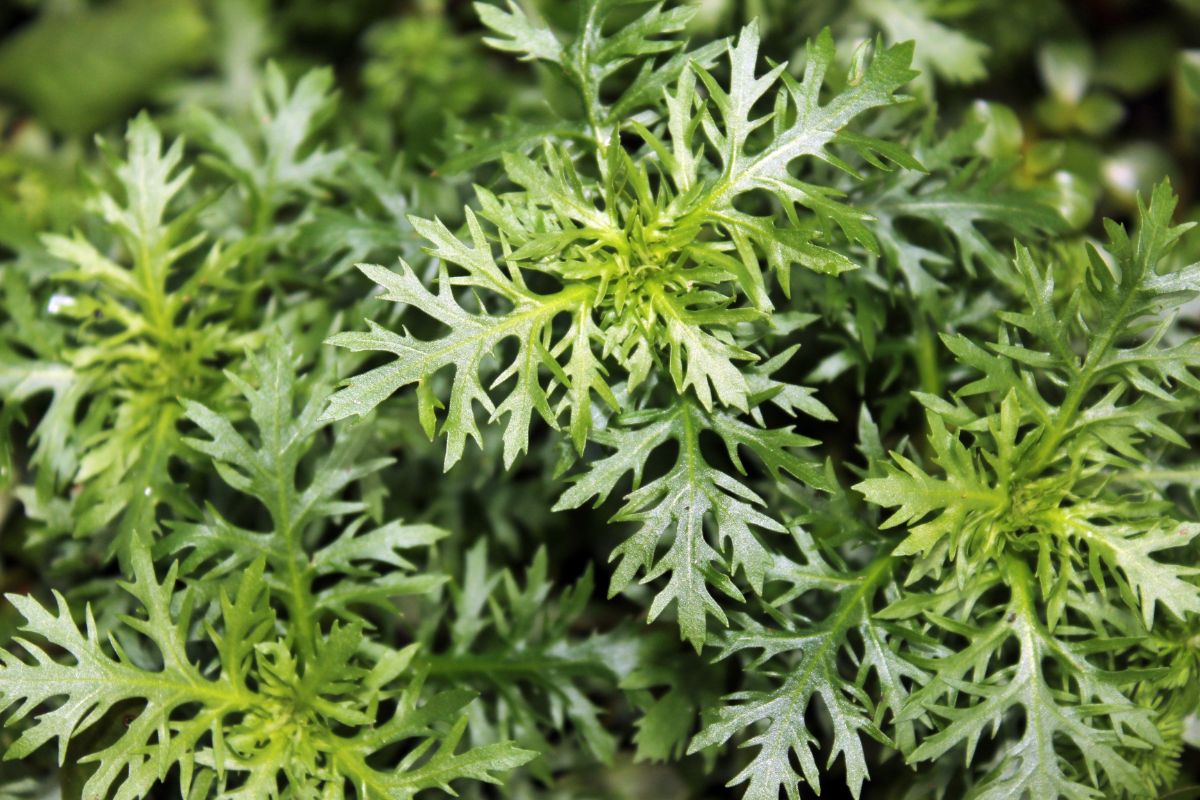
| Plant name: | Water wisteria |
| Light needs: | High to moderate |
| Nutrient needs: | High to moderate |
| Height: | 20” |
| Fish resistant? | No |
Native to Thailand and India, water wisteria is a fast-growing aquarium plant that is known for its bright green, feathery leaves. Growing up to 20” tall, this plant is usually sown in the back of fish tanks; however, it can also be kept at the front or middle of the tank if you don’t mind trimming it from time to time.
Water wisteria is often used to keep nitrogen levels in check in home aquariums, and it can outcompete algae too, which will help improve the look of your tank. This plant may fade and die back if it doesn’t receive enough fertilizer or light.
5. Dwarf Aquarium Lily (Nymphaea stellata)

| Plant name: | Dwarf aquarium lily |
| Light needs: | High to moderate |
| Nutrient needs: | High to moderate |
| Height: | Up to 31” |
| Fish resistant? | No |
A very attractive aquatic plant, the dwarf aquarium lily looks like a mini lily pad in your fish tank, and it has arrow-shaped leaves that range from green to red in color, depending on their age. Native to Southeast Asia and Australia, this easy-to-grow aquatic is generally cultivated from bulbs, which are planted in aquarium substrate.
After sprouting, young plants grow to about 5” in height, but mature plants can easily reach about 31” high. Their size makes aquarium lilies ideal backdrop plants, although they are also perfect for mid-tank placement. Aquarium lilies provide exceptional habitat for nano shrimp and fish fry, and they also help to clean up aquarium waste.
6. Anubias (Anubias barteri)

| Plant name: | Anubias |
| Light needs: | High to low |
| Nutrient needs: | Low |
| Height: | 9 to 14” |
| Fish resistant? | Mostly resistant |
New aquarium keepers can rest easy with anubias in their tanks. These resilient plants can handle a range of tank conditions, and they bounce back quickly if you happen to make a blunder with your tank. Even better, most fish leave anubias plants alone, making this one of the few aquarium plants that will do well, even in tanks with goldfish or cichlids.
Anubias have attractive, deep green leaves with tapering forms that look particularly appealing when planted in the middle of tanks. Many fish keepers choose to anchor these plants on a piece of driftwood, as they tend to grow best when their roots aren’t covered in a substrate. In fact, anubias can even grow in tanks without any substrate at all!
7. Dwarf Baby Tears (Micranthemum callitrichoides)
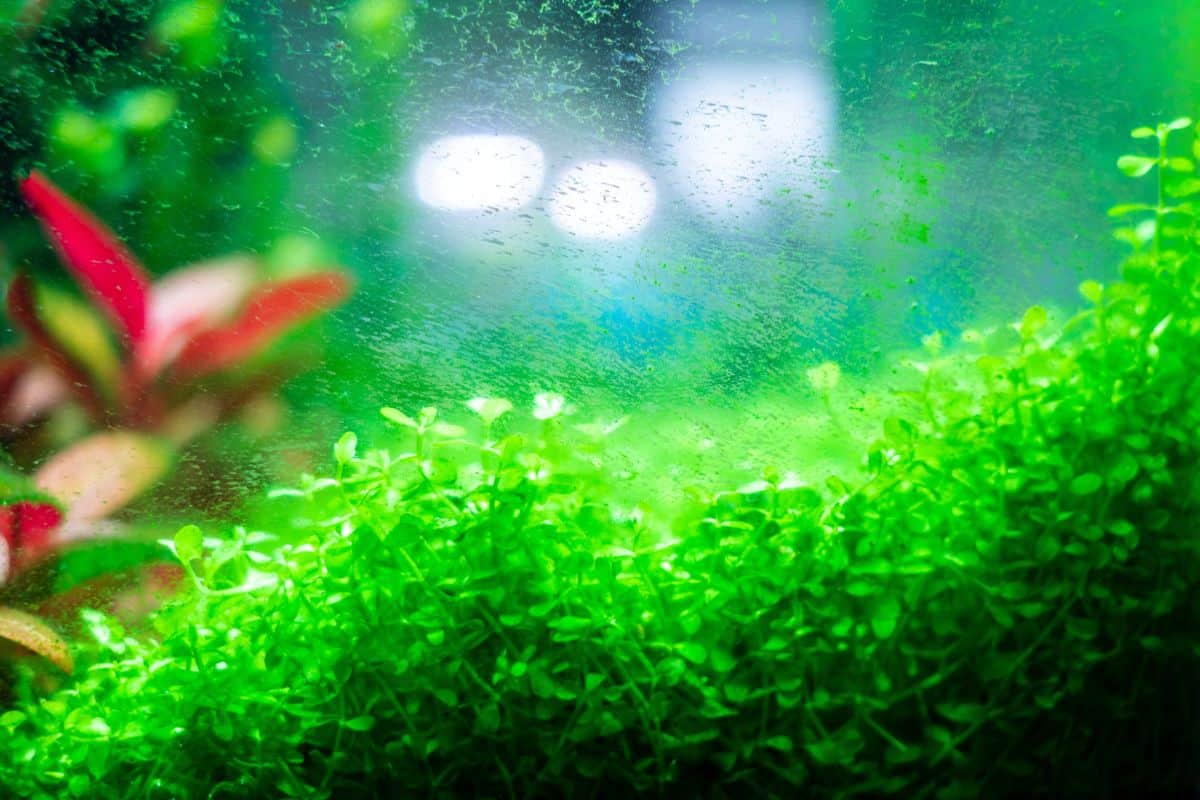
| Plant name: | Dwarf baby tears |
| Light needs: | High to moderate |
| Nutrient needs: | High to moderate |
| Height: | 5 to 6” |
| Fish resistant? | No |
Adorable dwarf baby tears are top picks as a foreground plant, and they will spread and fill in empty space in your tank, providing you with lots of fresh, green color. Leaves are small and delicate and look particularly striking when the plant is anchored to driftwood. Some tank keepers allow dwarf baby tears to cover the entire substrate of their tank, while other aquarists may opt to allow these plants to float at the top of their tank’s surface.
However, if you display dwarf baby tears, be sure to provide your plants with lots of light and added nutrients. Because these plants can be a bit pickier about water parameters than some of the other plants on this list, it may take some time for them to become established in your tank. But if you’re patient, they’re worth it!
8. Dwarf Hairgrass (Eleocharis parvula)
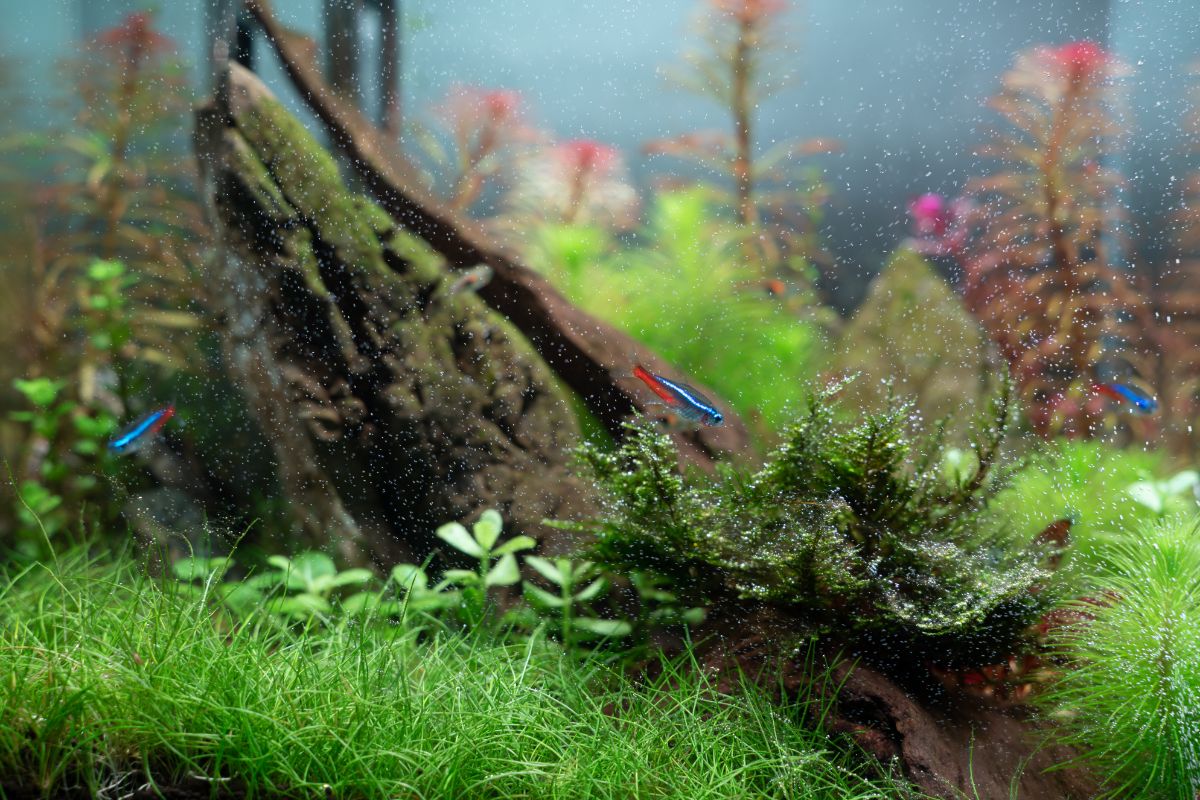
| Plant name: | Dwarf hairgrass |
| Light needs: | High to moderate |
| Nutrient needs: | High to moderate |
| Height: | 2 to 6” |
| Fish resistant? | No |
Dwarf hairgrass is found throughout the world in wild areas where currents are swift, water is shallow, and light is bright. In aquariums, these plants are easy to keep, just as long as they receive sufficient CO2, nutrients, and light.
A fast-growing plant, dwarf hairgrass readily spreads across tank substrates and can form a beautiful and thick carpet of vegetation in no time at all. In fact, because this plant spreads so easily, aquarists can often just purchase a small portion of this plant and allow it to fill in their tank spaces as it matures. Dwarf hairgrass is known for its ability to form a nice, protected area for bottom dwellers and small fry, and it oxygenates tank water too.
9. Brazilian Micro Swords (Lilaeopsis brasiliensis)
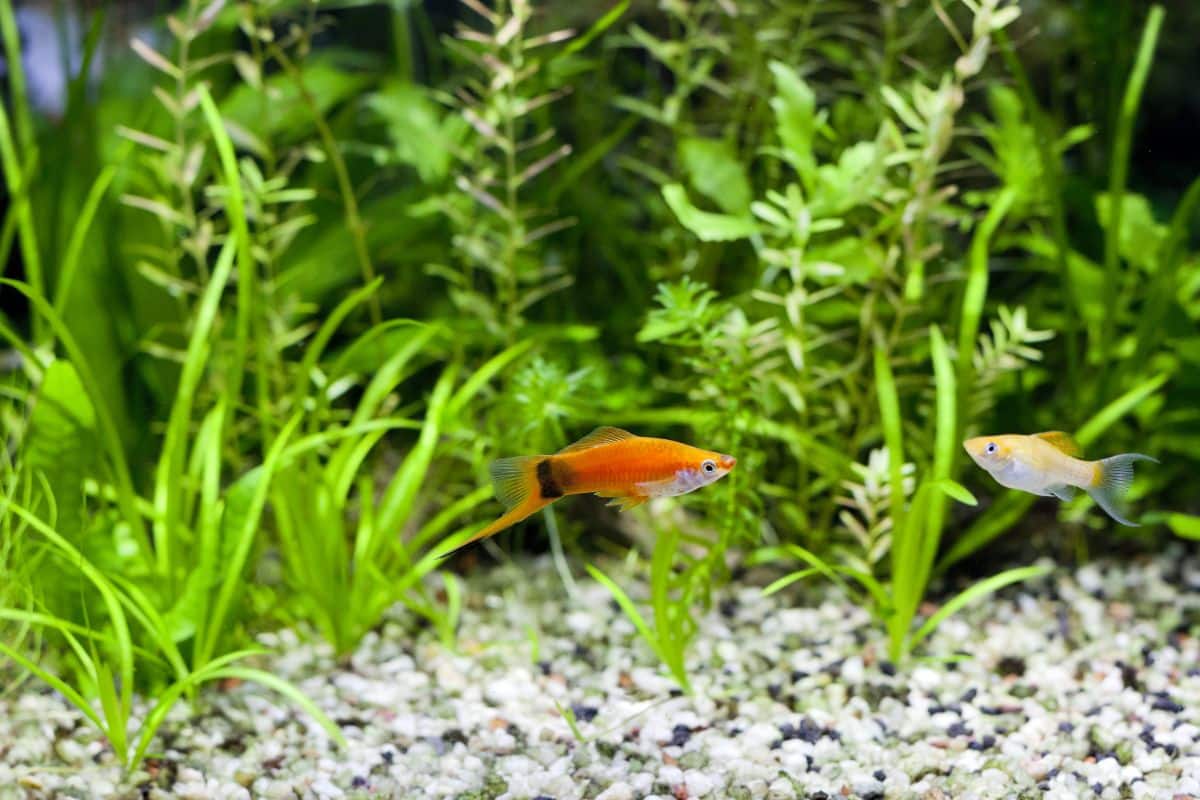
| Plant name: | Brazilian micro swords |
| Light needs: | High to moderate |
| Nutrient needs: | High to moderate |
| Height: | 4 to 7” |
| Fish resistant? | No |
Growing between 4 and 6” in height, Brazilian micro swords are exceptional mid-ground or background aquarium plants. Bright green leaves are long and slender and look a bit like grass. As they grow, clumps of Brazilian micro swords will form tidy habitats for shrimp and small fish to develop in.
Another fast-growing aquarium plant, Brazilian micro swords, are usually easy to find and can be purchased in pots or as tissue culture. Once established in your tank, micro swords will spread via rhizomes and can be divided to provide you with new aquarium plants.
10. African Water Fern (Bolbitis heudelotii)
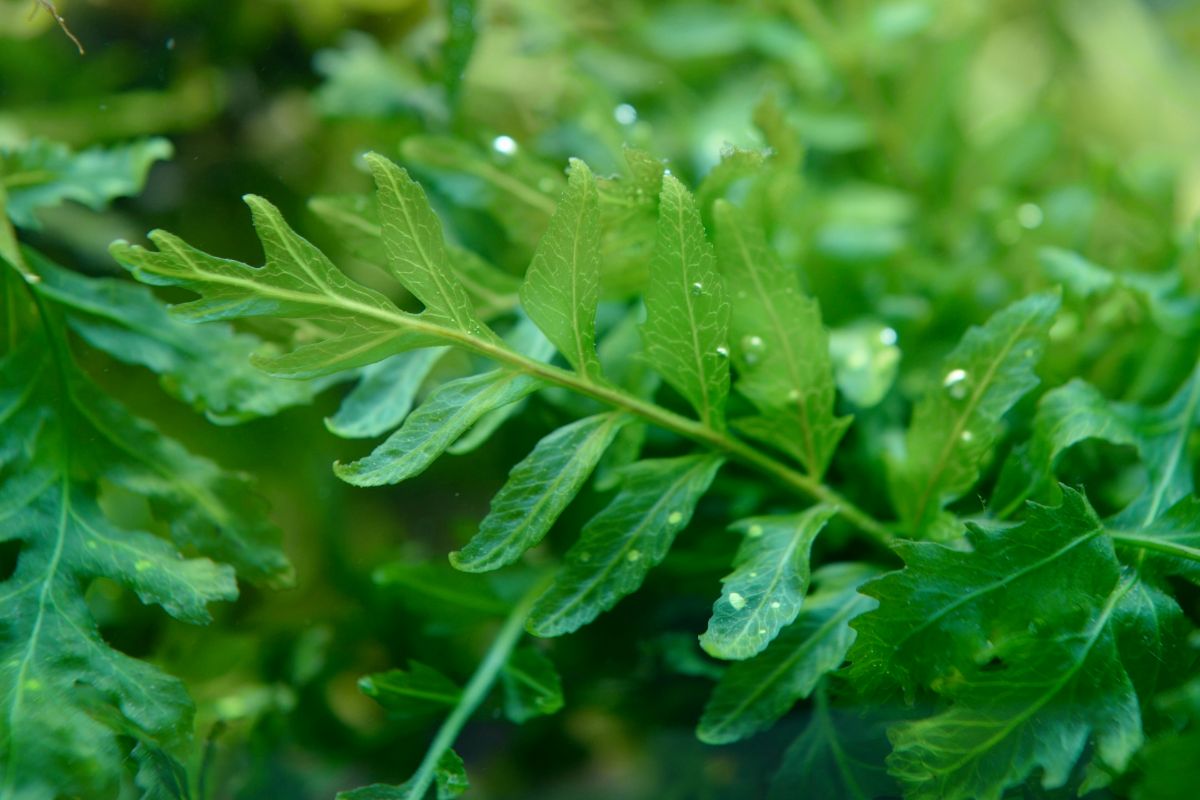
| Plant name: | African water fern |
| Light needs: | Moderate |
| Nutrient needs: | High to moderate |
| Height: | Up to 16” |
| Fish resistant? | Mostly resistant |
In its native West Africa, African water fern can be found along bodies of water and in boggy spots. Indoors, this plant can be grown fully submerged in aquariums or partially submerged if you’re keeping a vivarium or similar setup.
Large, lacy leaves are vibrantly green and slightly translucent, which makes them seem to glow when they’re backlit by a gentle aquarium light. While this plant is slow growing, it does get tall, so it’s best suited as a backdrop plant. African water ferns usually grow best when anchored to rocks or a bit of driftwood.
11. Java Fern (Microsorum pteropus)
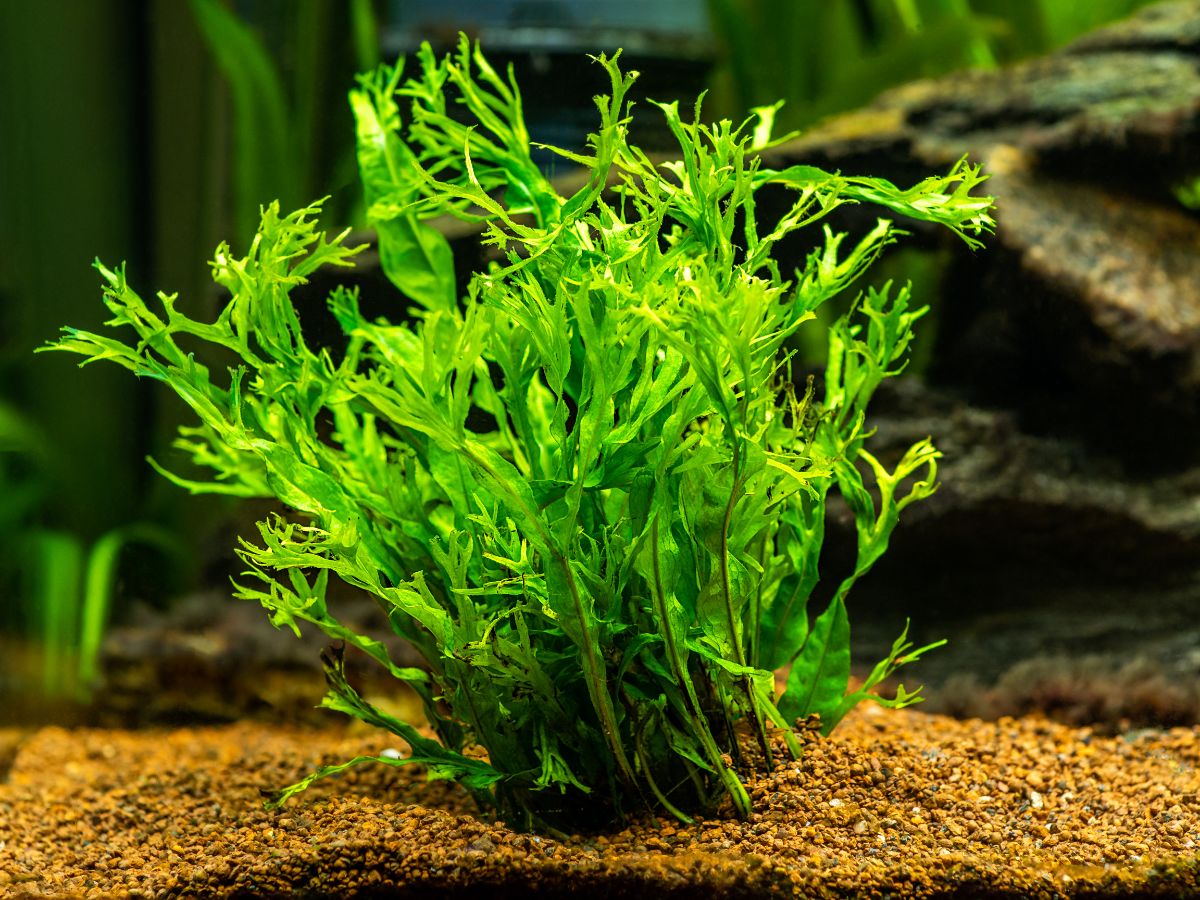
| Plant name: | Java fern |
| Light needs: | High to low |
| Nutrient needs: | Low |
| Height: | Up to 14” |
| Fish resistant? | Mostly resistant |
Another very popular aquatic specimen, Java ferns, are resilient plants that are very hardy and adaptable to most freshwater aquariums. These plants aren’t picky and don’t have very stringent care requirements. They also can be planted in a range of substrates or mounted to rocks or driftwood.
Java fern is a slow grower, but it will fill in space and add lots of colors. Some aquarists don’t like the look of this plant as its leaves are very distinct, but if it suits your tank style, it is a pleasant plant to grow. Most fish will also leave Java ferns alone, including voracious goldfish!
12. Water Trumpet (Cryptocoryne Wendtii)
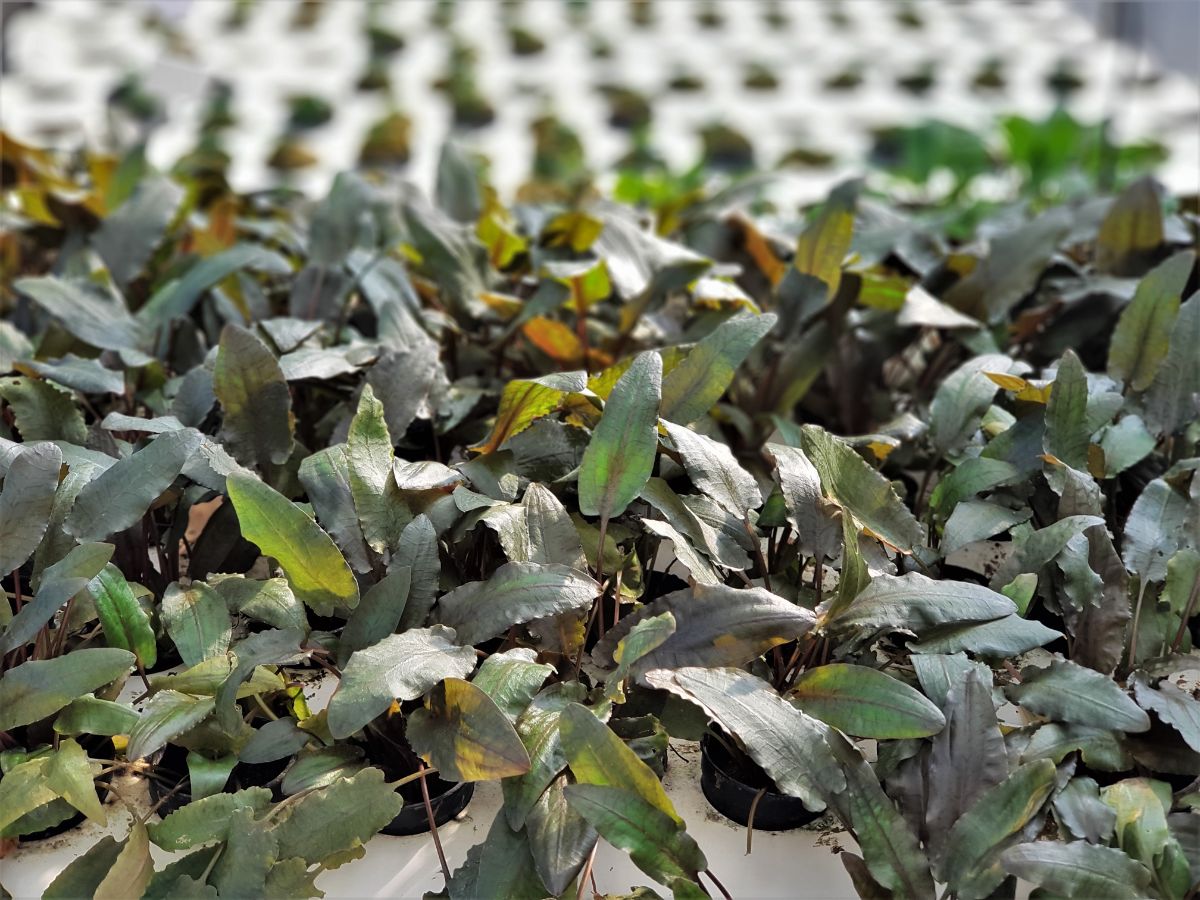
| Plant name: | Water trumpet |
| Light needs: | High to low |
| Nutrient needs: | High to moderate |
| Height: | 6 to 7” |
| Fish resistant? | No |
Water trumpets make perfect mid-ground plants for your aquarium since they grow to about 6 to 8” in height. Leaves are pointed and slightly ruffled and range in color from bright green to a rich, reddish hue. These plants are able to tolerate lower light conditions, so you won’t need to invest in a bright aquarium light to keep them happy!
Water trumpets are slow growers, but they will eventually spread via underground runners. This plant is native to Sri Lanka, where water tends to be hard. So these plants can handle hard water in your aquarium too.
13. Aponogeton Crispus

| Plant name: | Aponogeton crispus |
| Light needs: | High to moderate |
| Nutrient needs: | High to moderate |
| Height: | 12 to 24” |
| Fish resistant? | No |
An easygoing and beautiful aquarium plant, Agonogeton crispus features long, blade-shaped leaves with wavy edges. Those leaves are a bright green color and slightly transparent, making them absolutely stunning in backlit aquarium displays. Because of their height, crispus is ideal for mid-to background planting.
Crispus usually is sold as a bulb, which should be lightly or only partially buried in an aquarium substrate. Planting the bulb too deep may inhibit growth. Plant leaves are relatively delicate and break easily, but they grow back quickly, so don’t worry if you damage a leaf or two.
14. Pogostemon Helferi
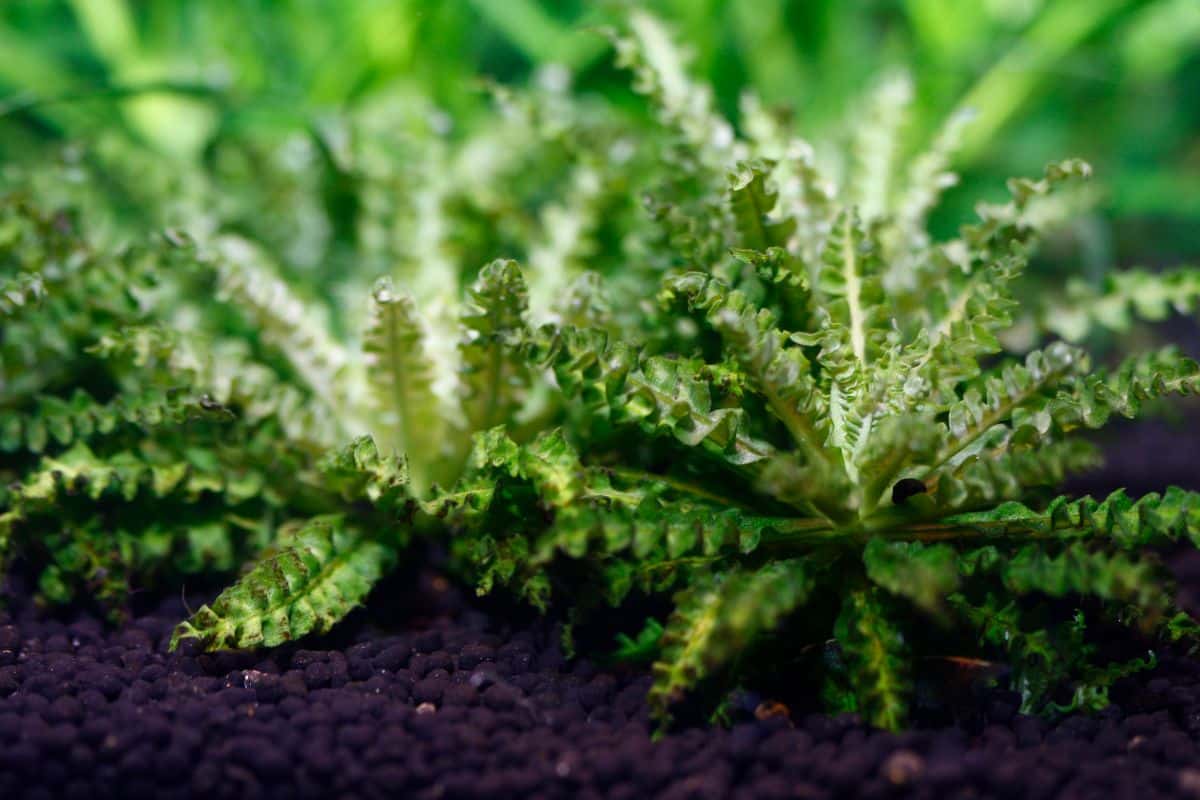
| Plant name: | Pogostemon helferi |
| Light needs: | High |
| Nutrient needs: | High to moderate |
| Height: | 2 to 6” |
| Fish resistant? | No |
In its native Thailand, helferi is known as “Downoi,” which means “little star.” This is an apt name for this charming aquatic plant, as it naturally forms a compact, star-like shape as it grows. Leaves are green and slightly curled and will look very striking as the plant spreads across your aquarium substrate, forming a vibrant carpet.
Plants grow between 3 and 10” high, and they can be kept pretty much anywhere in your tank. Just provide your helferi with plenty of light and nutrients, and it will naturally spread via side shoots.
15. Sunset Hygro (Hydrophila polysperma)
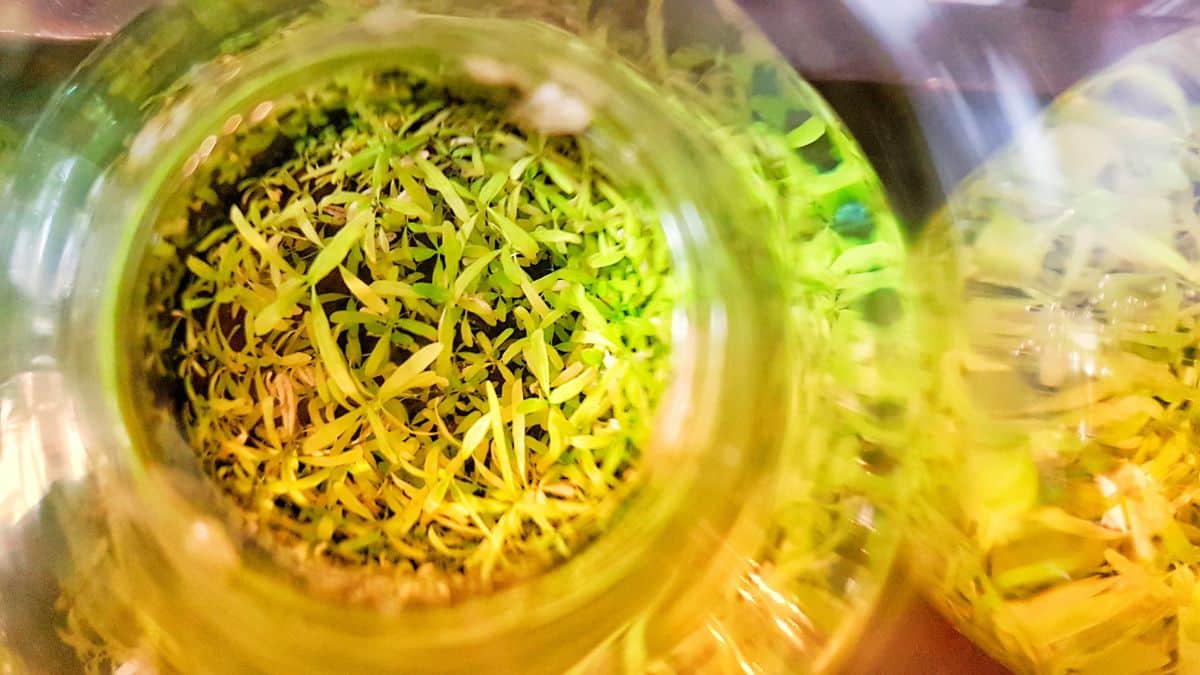
| Plant name: | Sunset hygro |
| Light needs: | High to low |
| Nutrient needs: | High to moderate |
| Height: | Up to 24” |
| Fish resistant? | No |
Sunset hygro has slender, blade-shaped leaves that extend in opposite directions off the central stem. Color and leaf shape will vary slightly depending on the parameters of your tank and how much light your plant receives.
Sunset hygro grows quickly, and it should be pinched off from time to time to encourage branching and to keep it from crowding out other nearby plants. This fast-growing plant is hardy and can adapt to most water conditions. Like some of the other plants on this list, Sunset hygro can be invasive in some areas, so never allow sections of this plant to spread into your local environment.
16. Rotala Rotundifolia
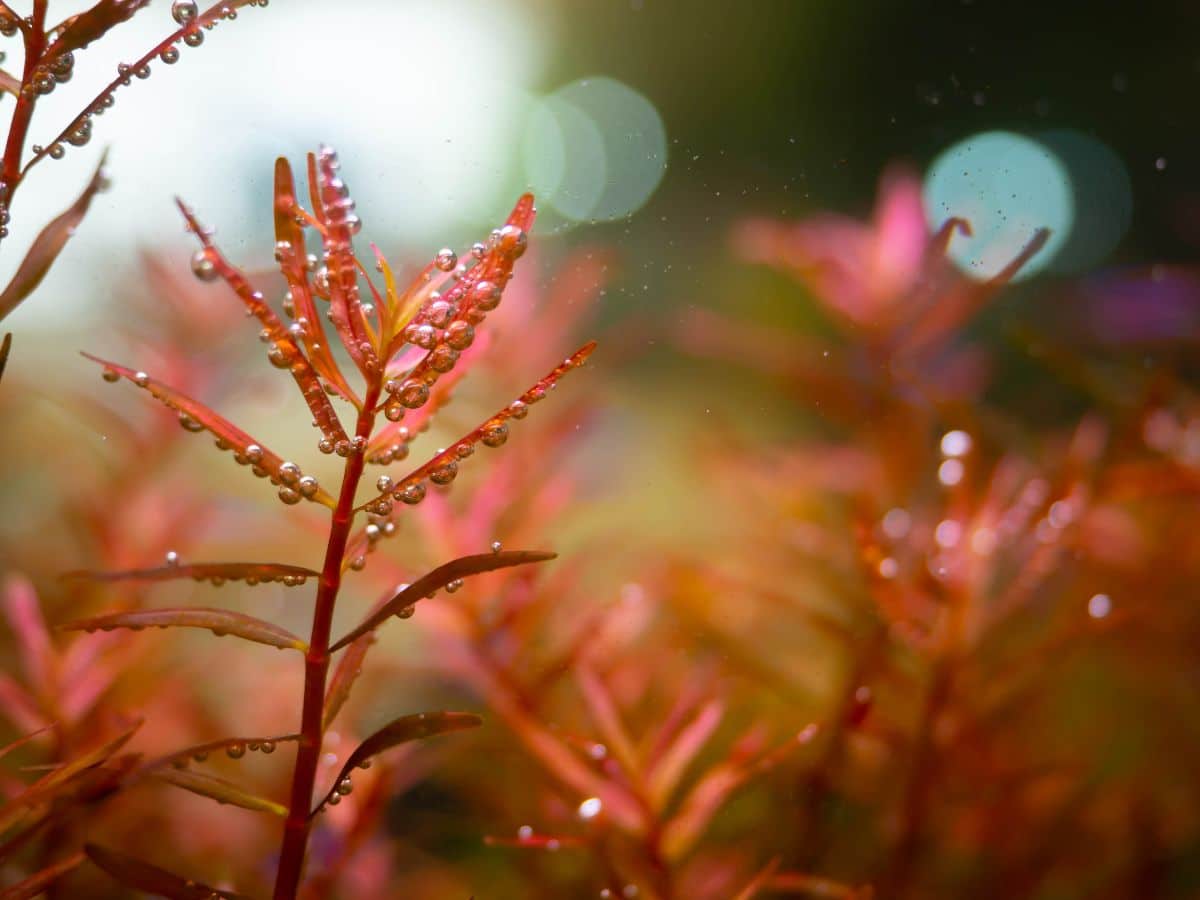
| Plant name: | Rotala rotundifolia |
| Light needs: | High |
| Nutrient needs: | Moderate |
| Height: | Up to 6” |
| Fish resistant? | Mostly resistant |
Native to the tropics of Asia, Rotala rotundifolia has pretty, rounded leaves that can range in tone from green to red depending on how much light the plant receives. Another adaptable plant, rotundifolia can handle a wide range of tank conditions, but it will grow best with a CO2 injection and LED lights.
Often used as a midground plant, a well-cared-for rotundifolia will grow and spread rapidly via side shoots. Plants should be trimmed regularly to keep them from getting unruly. The good news is you can plant your trimmings in your tank substrate, and they will readily grow into new plants!
17. Blue water Hyssop (Bacopa caroliniana)
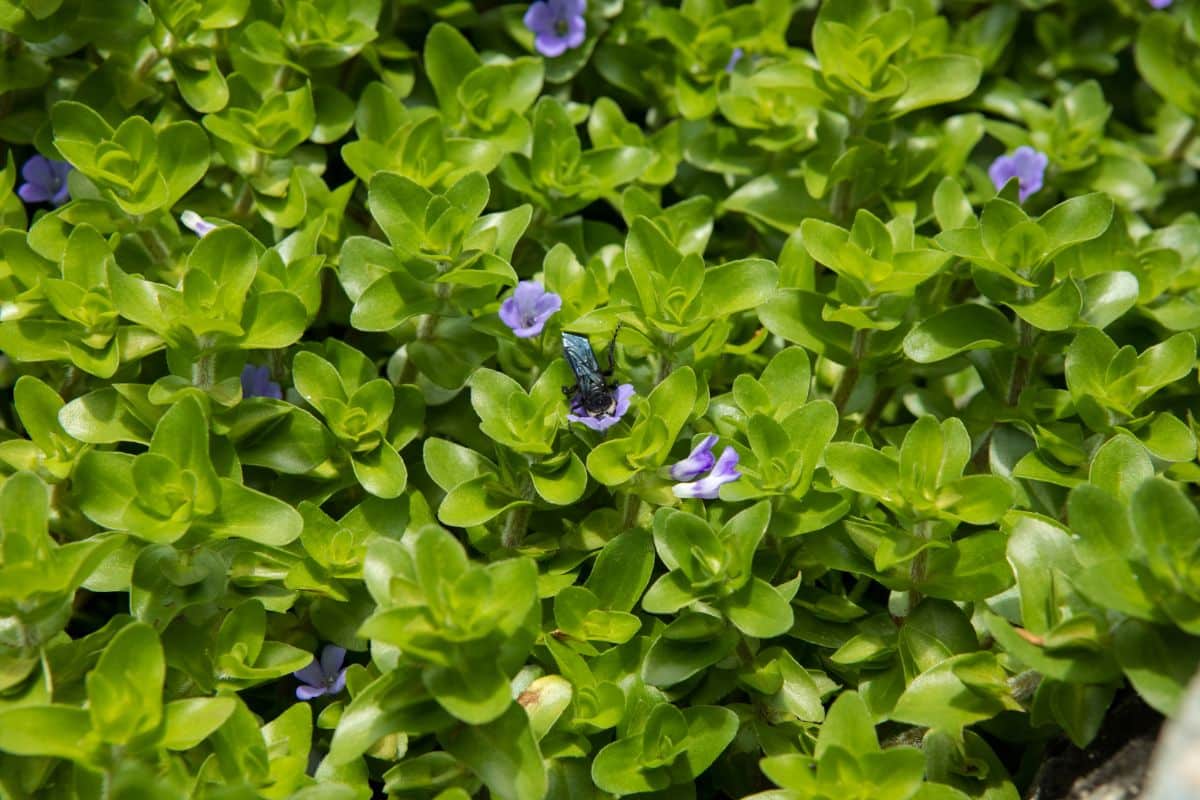
| Plant name: | Blue water hyssop |
| Light needs: | High to moderate |
| Nutrient needs: | Low |
| Height: | Up to 24” |
| Fish resistant? | No |
Native to the United States, water hyssop is a stem plant with rounded leaves that taper slightly towards the tips. Under ideal conditions, these plants will also flower pretty, petite blooms. This plant can be grown fully submerged or partially submerged, depending on your tank setup.
Like other stem plants, water hyssop looks best when planted in clumps throughout your aquarium. While it is slow growing, this plant can grow several feet tall. To keep your plant from taking over, take trimmings from time to time and propagate them to create more plants.
18. Moneywort (Bacopa monnieri)
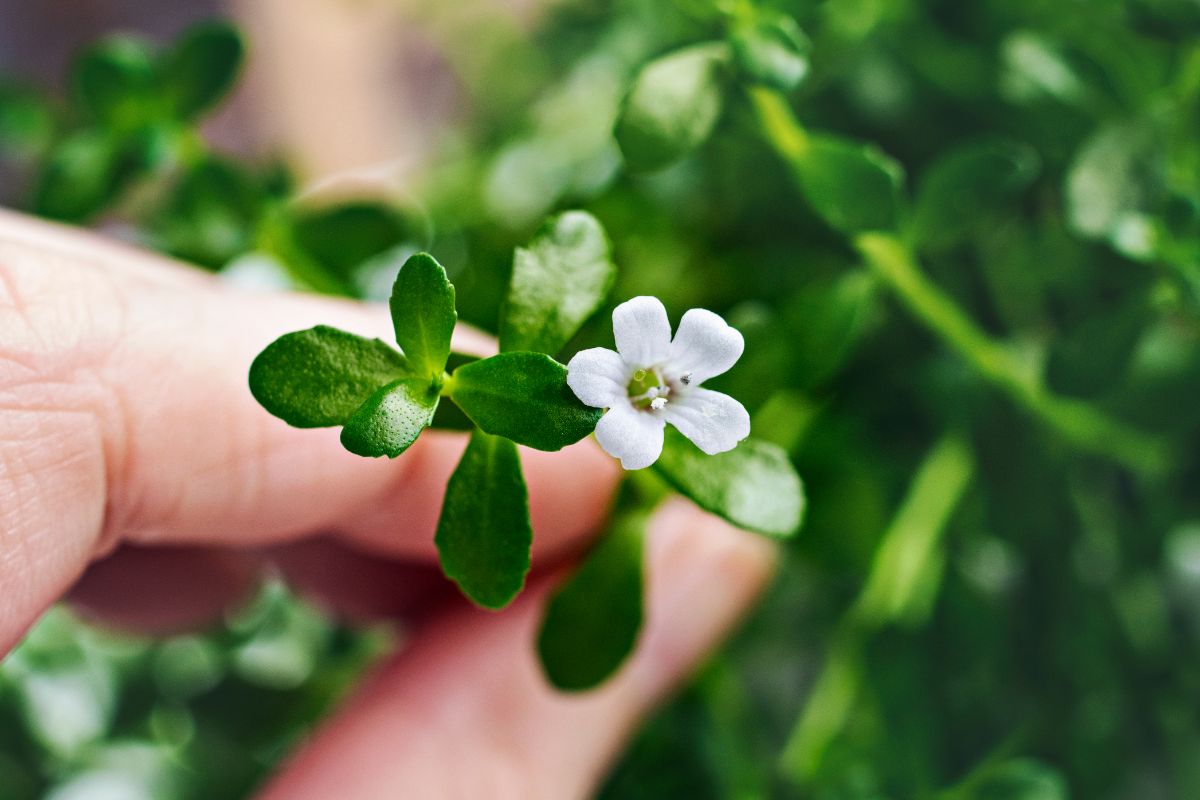
| Plant name: | Moneywort |
| Light needs: | High |
| Nutrient needs: | High to moderate |
| Height: | 11 to 13” |
| Fish resistant? | No |
A close relative of water hyssop, moneywort is another top aquarium plant for beginning growers. Well-known for its adaptability, this plant can grow in lower-tech setups, but it will develop much faster when provided with a nutrient-rich substrate and moderate to high lighting.
Like blue water hyssop, moneywort is a stem plant that should be planted in groups to make a more impactful display. This plant can also bloom, even when fully submerged in your tank.
19. Pepperwort (Marsilea spp.)
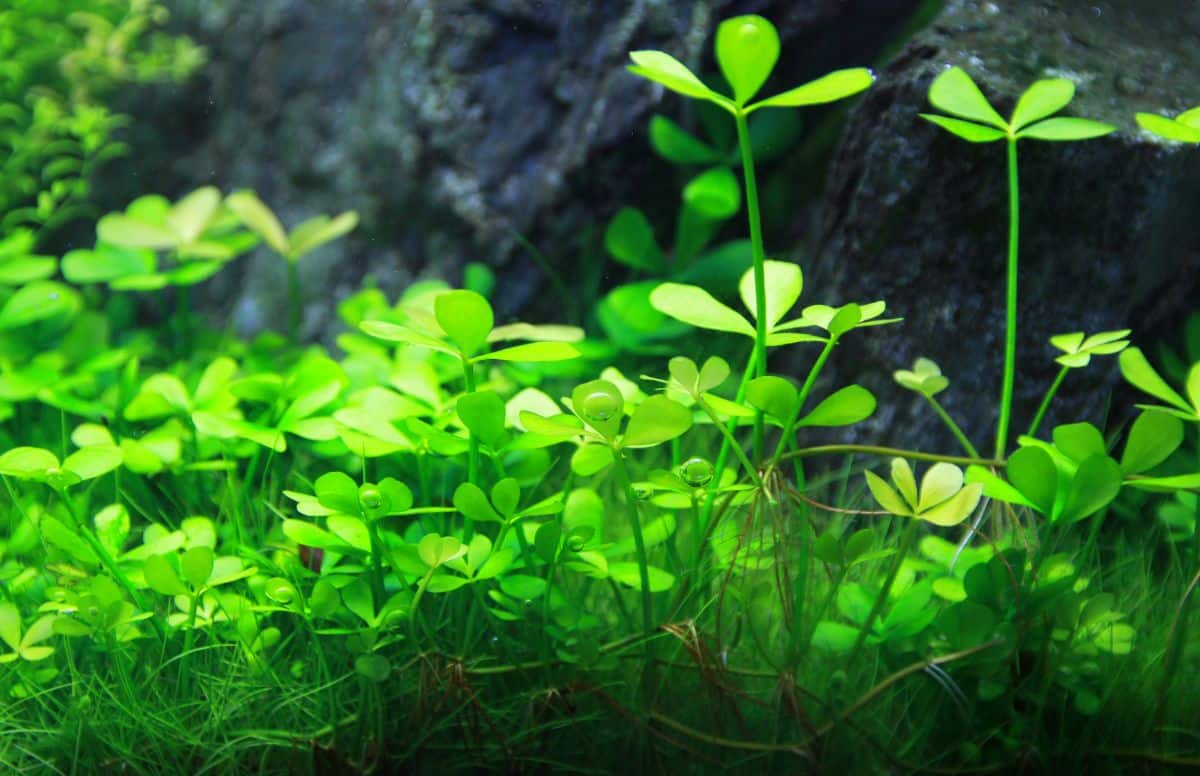
| Plant name: | Marsilea |
| Light needs: | High to moderate |
| Nutrient needs: | High to moderate |
| Height: | Up to 4” |
| Fish resistant? | No |
Often used as an alternative to dwarf baby tears, pepperwort is a low-growing, compact plant that forms dense carpeting across aquarium substrates. It can also be grown as a foreground plant, where its vividly green, rounded leaves will show beautifully.
Perfect for low-tech tank setups, pepperwort can grow in low light and without CO2 injections. Plants can be easily propagated via splitting, although they will also spread via runners.
Frequently asked questions
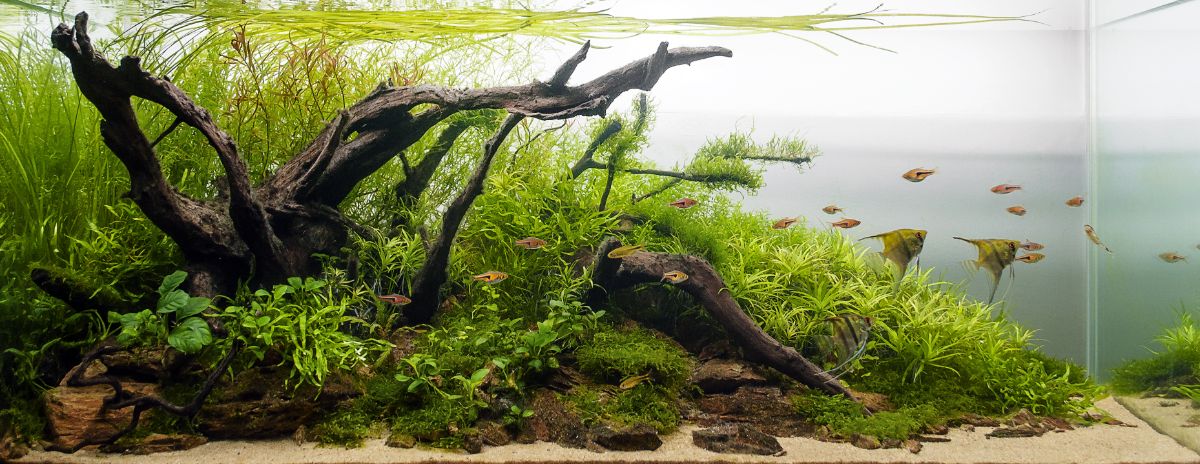
The substrate should be at least 2” deep in order to properly anchor aquarium plants in place. That said, some plants can be planted in bare-bottom aquariums or anchored to driftwood or rocks for a different look and feel.
Aquarium plants can be grown in sand or gravel, but they grow best in aquarium soil. Aquarium soil is more lightweight than sand, so it can help roots to develop better. It also usually contains nutrients that aquatic plants need to grow.
While all aquarium plants will help to oxygenate tank water, some of the best plants for the job include eelgrass, red Ludwigia, and hornwort.
Goldfish are herbivorous and tend to be quite destructive in planted tanks. For this reason, many fish keepers choose to only keep artificial plants in tanks with goldfish. Plants like anubias and Java fern are known to be less attractive to goldfish, so you may want to try out these plants in your tank if you really want to keep live plants.
Beyond adding color and interest to your aquarium, live plants provide a habitat for fish and safety for young fry to develop in. Aquarium plants also help to purify aquarium water, outcompete algae and boost the health of fish.
Yes. While aquarium plants will get some nutrients from fish waste, they will generally need added nutrients to grow properly. Those nutrients can come in the form of root tabs, liquid fertilizer, or nutrient-rich aquarium soil.
Summary
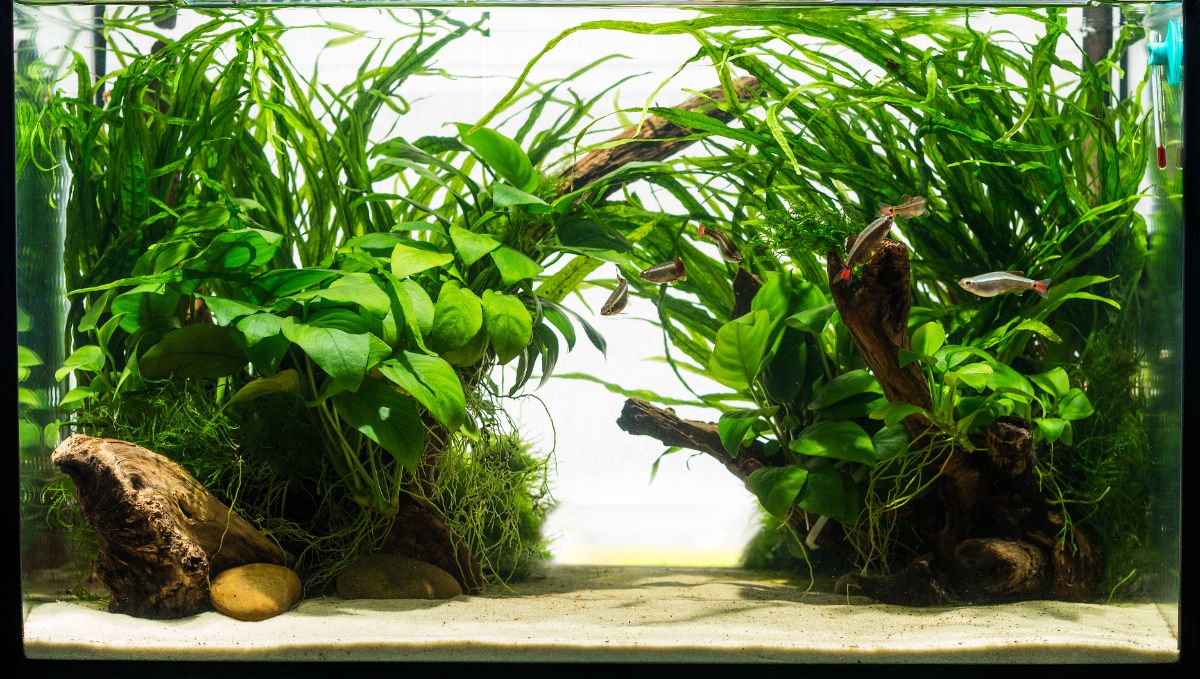
Once, artificial plants were standard among aquarists, but as the aquarium trade has developed, there’s been an increased interest in live plants. And it’s no wonder why. Live aquarium plants elevate any aquarium and help to regulate water conditions, and improve the health and happiness of fish and invertebrates.
If you’re new to keeping live plants, it’s a good idea to start off with a few beginner-friendly plants so you can learn the basics of aquarium plant care. After you’ve mastered the upkeep of these easygoing plants, you can always expand your aquarium collection to include more exotic species too!
For more information about plants that can be grown in water, see our full guide here.

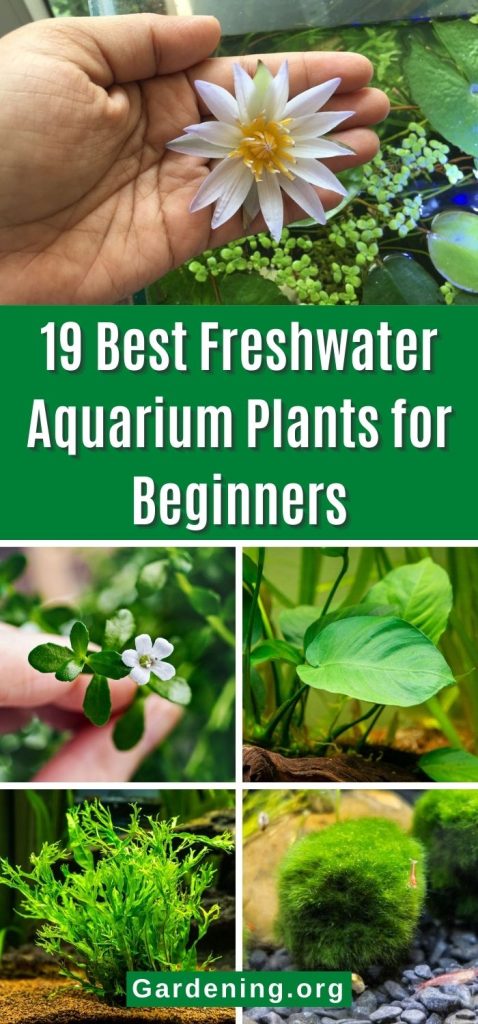
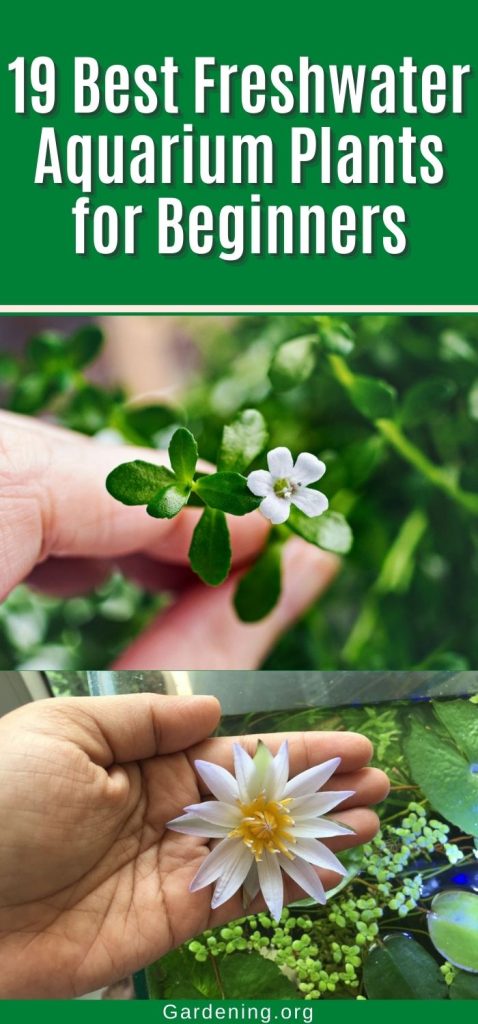
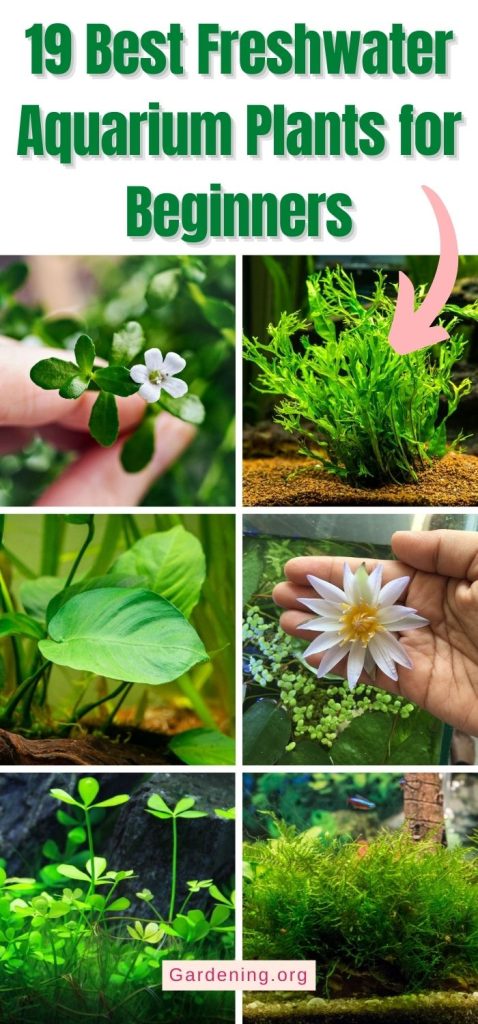
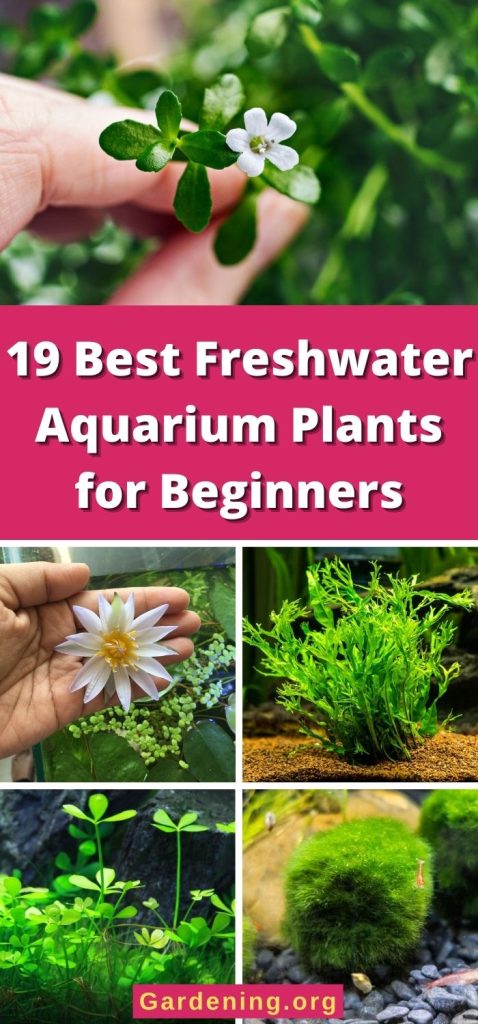
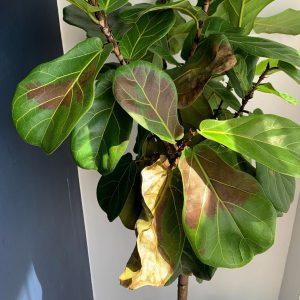
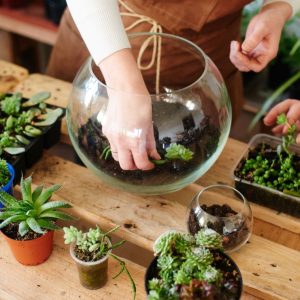


Canton Aquatics
Live plants genuinely make a difference in an aquarium, both aesthetically and functionally! I love how they add natural beauty while also keeping the water clean and balanced for fish. This article does a great job of explaining the benefits and plant choices—I am inspired to try more live plants in my tank!